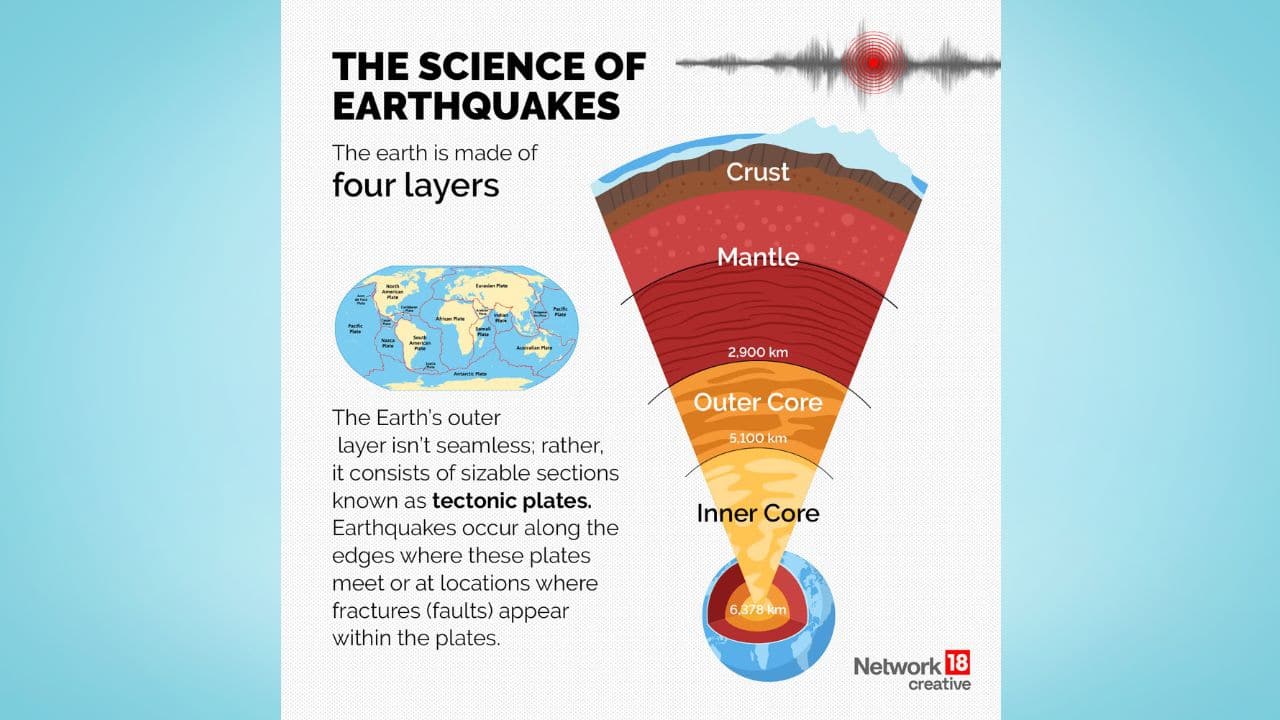
Earthquakes occur along the margins of plates known as tectonic plates where they intersect or where fractures (faults) appear within the plates. Tectonic plates are simply Earth's outer layer divided into large parts. (Image: NW18 Creative)
In fault zones, these plates constantly slide against each other, and friction can slow them down, resulting in pressure buildup over time. When the force eventually overcomes the friction, the crust abruptly fractures or shifts, releasing built-up pressure as seismic waves. (Image: NW18 Creative)
Hypocentre is the point below the earth’s surface where the earthquake occurs whereas epicentre is the exact same thing above the surface of the earth. (Image: NW18 Creative)
Magnitude evaluates the energy produced at the earthquake's source, as measured by seismographs. Intensity determines the strength of shaking at a certain area based on its effects on persons, structures, and objects in the natural world. (Image: NW18 Creative)
The intensity and magnitude of an earthquake can range from 1 to 9. An earthquake with an intensity of one can be barely felt and as the number increases, the extent of damage and severity also increases. An earthquake with an intensity of eight or more can cause heavy destruction. (Image: NW18 Creative)
In general, the greater the magnitude of the mainshock, the more powerful and frequent the aftershocks. (Image: NW18 Creative)
Scientists quantify earthquake energy called seismic waves with seismometers, which detect them beneath the device and record them as zig-zags. This data assists in determining the timing, location, and magnitude of the earthquake. (Image: NW18 Creative)
Discover the latest Business News, Sensex, and Nifty updates. Obtain Personal Finance insights, tax queries, and expert opinions on Moneycontrol or download the Moneycontrol App to stay updated!









